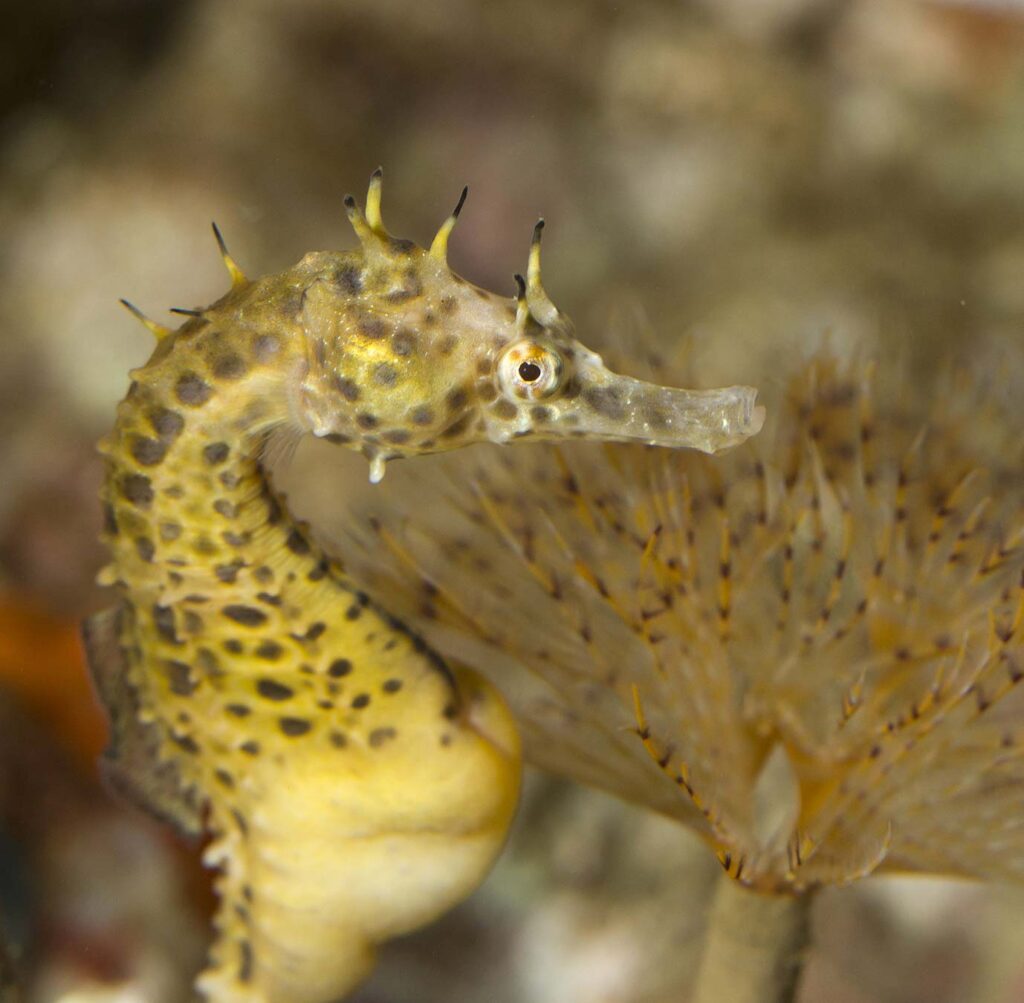
Big-belly seahorse
Hippocampus abdominalis
maximum length

35 cm
feeding

Carnivore
activity

Diurnal
The big-belly seahorse, as the name would suggest, has a prominent belly, much larger in the males due to a developed incubating bag, generally pearly white. Its colour varies from dark grey to yellow, orange and white, depending on the habitat, depth and location. The body and tail are generally flat, often with broad bands and numerous, small stains on the dorsal fin. The males usually have darker stains and a vertical yellow band near the cover of the bag. They also have a longer tail and a shorter and wider snout than the females. Sea horses are monogamous and couples always go together, often holding tails. Their long, trumpet-shaped snout is used to absorb the plankton they eat.
The males have an incubating bag on their belly where they carry the fertilised eggs until they hatch.
This is a fish that lives in protected ports, on shallow reefs and soft, deep substrates, with sponges.
Interesting facts
Seahorses can move each eye independently to be able to watch what is going on around them.
Distribution
Conservation status
